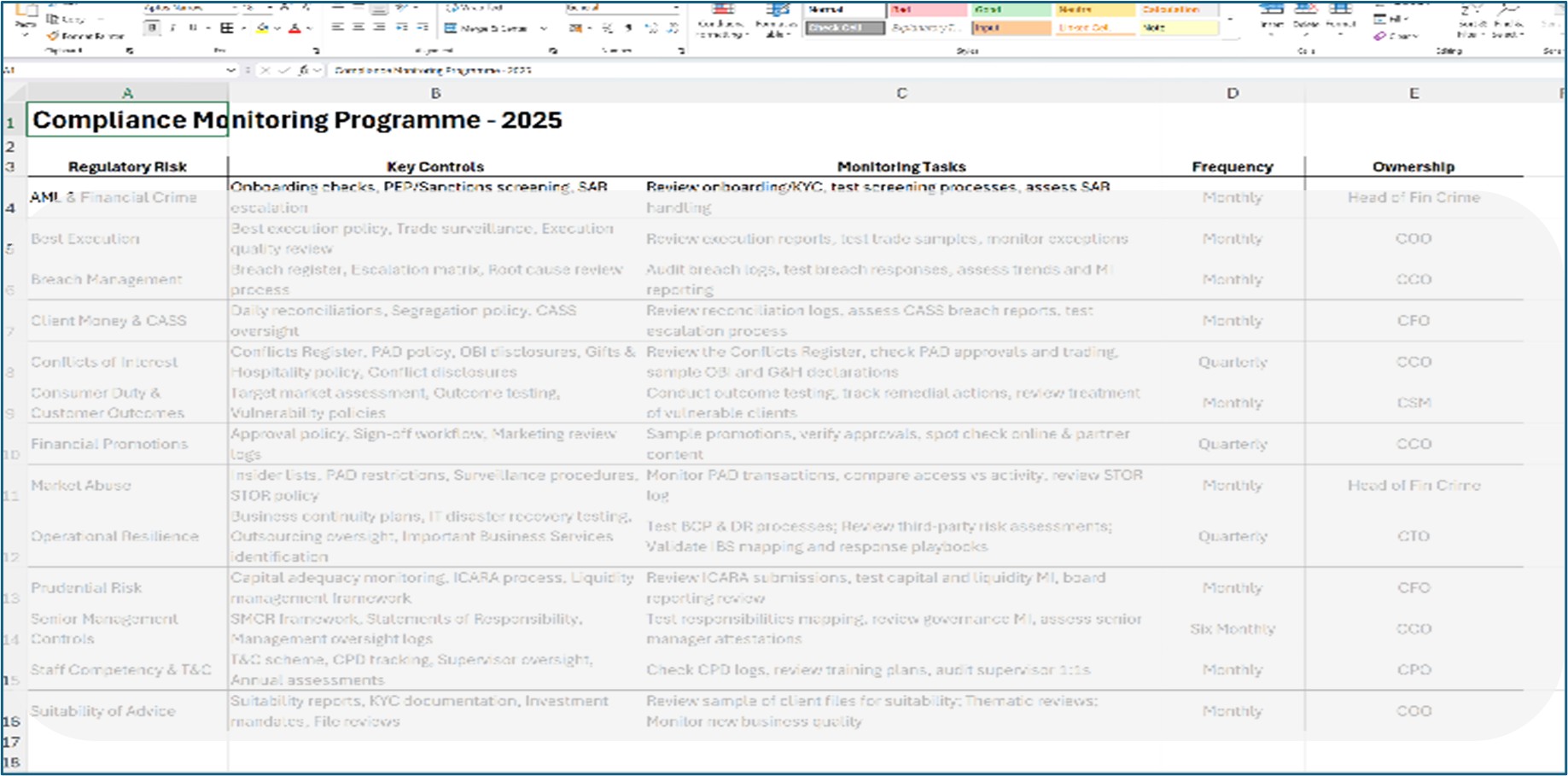We’ve developed a step-by-step roadmap to support firms that want to adopt compliance automation technology. One of the key steps is to start with one area, learn from that implementation and scale up once you’ve built confidence in the system and your team’s ability to manage the change process.
Many firms will choose one of two key areas, for example their Compliance Monitoring Programme or Compliance Registers.
Compliance Monitoring Programme
The Compliance Monitoring Programme (CMP) is the core assurance activity undertaken by UK-regulated firms.
Likely current situation: manual process

Fig 1. Typical manual CMP process – reliant on spreadsheets and email, with limited tracking and oversight
- The CMP is created in a spreadsheet.
- Reminders are emailed manually to staff assigned to carry out reviews.
- Results are sent back via email and manually added to the spreadsheet.
- Corrective actions are tracked in yet another email chain or spreadsheet.
- MI is compiled manually—often shortly before board meetings.
This process is manual at every stage, fraught with delays, version-control issues, and the risk of things falling through the cracks. For this process to be effective, compliance officers must become “process overseers” as much as compliance professionals.
Now imagine an automated process:
a
Fig 2. My Compliance Centre’s automated Compliance Monitoring – with task tracking, escalation, and real-time Management Information built in.
- The CMP lives within a secure compliance system.
- The system automatically schedules tasks and sends reminders.
- Staff enter results directly into the system.
- The system tracks completion of corrective actions and escalates overdue items.
- MI is instantly available to all stakeholders, providing up-to-date insights at any time.
The automation embedded in this process delivers many benefits:
- Enhances the role of Compliance Officers: frees up time to focus on more strategic tasks, like analysis and decision-making, rather than routine administrative work.
- Time efficiency: accelerates processes, reducing manual effort and time spent on tasks that would otherwise require extensive human input.
- Greater transparency: tracks and records every action taken, making the process more transparent and easier to audit.
- Better management information: generates detailed and consistent reports, providing better insights for improved decision-making.
- Links remediation to original task: providing clear evidence of action taken to manage risk if required by senior management, internal audit or the Regulator.
Registers: more than a logbook
Let’s take another example: Compliance Registers.
Fig 3. Our template library offers over 60 pre-configured risk, governance and compliance registers
Recognising the need for an audit trail of key compliance activity, many firms maintain a wide range of registers as static records, updated sporadically and often under pressure, normally with few controls.
However, if automation was introduced to this process:
- Notifications ensure reviews are completed on time.
- Approval workflows streamline oversight.
- Auto-reminders when reviews are due prevent gaps in your governance process.
- MI dashboards allow real-time insight across all register categories, from Gifts & Hospitality to Operational Risk; from Complaints to Financial Promotions.
- No more scrambling before audits. No more wondering if you’re up to date. You’ll know—and be able to show the regulator too.